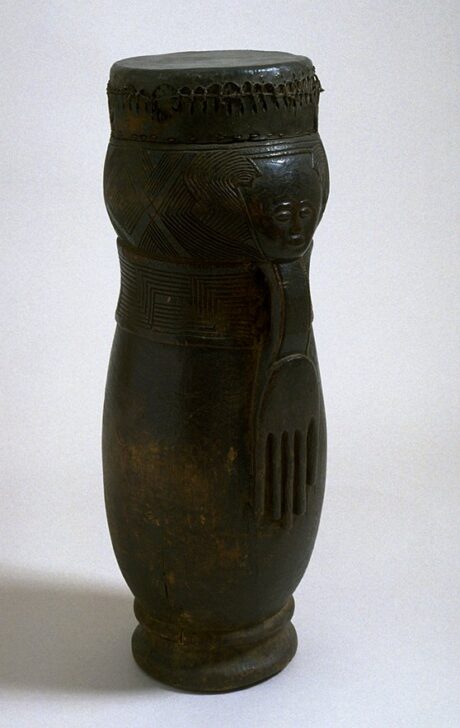Drum
Kuba

Description
Subject Matter:
According to Kuba oral history, drums were said to have been introduced by king Shyaam. They served as symbols of royal dignity and were used for dance during various ceremonies. Pel ambish is a drum of office commissioned by the king and contains a distinct geometric pattern of his choosing.
The face on this particular drum can be a potential representation of a king or a titleholder. After the king's death the drum turned into a commemorative object, removed and exhibited on important occasions. The hand depicted on this drum often served as a symbol representing a warrior. Additionally the geometric patterns on this drum are similar to the patterns found on Kuba textiles and basketry.
References:
David Binkley, Avatars of Power, 1987
Donna Coates Rogers, Royal Art of Kuba 1978
Daniel Biebuyck, The Arts of Zaire, 1985
Georges Meurant, African Textiles from the Kingdom of Kuba, 1986
Roy Sieber, African Textiles and Decorative Arts, 1972
Jan Vansina, The Children of Woot, 1978
Physical Description:
Vertically positioned drum with cylindrical form. There is a face carved into the drum and underneath the face is a carved hand. Right above the hand is a rectilinear design, resembling interlocking boxes, wrapping around the circumference of the drum. Directly behind the hand is another geometric pattern resembling interlocking diamonds wrapping around the circumference of the drum.
Usage Rights:
If you are interested in using an image for a publication, please visit https://umma.umich.edu/request-image/ for more information and to fill out the online Image Rights and Reproductions Request Form.